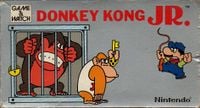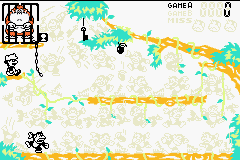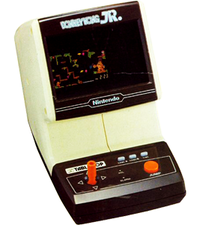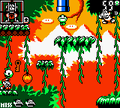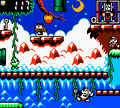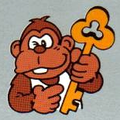Donkey Kong Jr. (Game & Watch): Difference between revisions
No edit summary Tags: Mobile edit Advanced mobile edit |
m (Text replacement - "{{([Ss]erials|[Rr]elease)\|" to "{{flag list|") |
||
| Line 5: | Line 5: | ||
|developer=[[Nintendo Research & Development 1]] | |developer=[[Nintendo Research & Development 1]] | ||
|publisher=[[Nintendo]] | |publisher=[[Nintendo]] | ||
|release='''Game & Watch:'''<br>{{ | |release='''Game & Watch:'''<br>{{flag list|Japan|October 26, 1982 (New Wide Screen)|USA|October 26, 1982 (New Wide Screen)|USA|April 23, 1983 (Table Top)|USA|October 7, 1983 (Panorama Screen)}} '''Mini Classics:'''<br>{{flag list|Europe|August 6, 1998|USA|1998}}'''Nintendo DSi ([[DSiWare]]):'''<br>{{flag list|Japan|August 19, 2009|USA|April 19, 2010|Europe|April 23, 2010|China|August 12, 2010}} '''Nintendo 3DS ([[Nintendo eShop#Nintendo 3DS|eShop]]):'''<br>{{flag list|Japan|June 6, 2011|USA|June 6, 2011|Australia|June 6, 2011|Europe|July 7, 2011}} | ||
|genre=[[Genre#Puzzle games|Puzzle]] | |genre=[[Genre#Puzzle games|Puzzle]] | ||
|modes=Single player | |modes=Single player | ||
Revision as of 19:13, September 27, 2024
| It has been requested that more audio and/or video files related to this article be uploaded. Specific(s): DSi version only Please upload all related music, sound effects, voice clips, or any videos for this article. See the help page for information on how to get started. |
| Donkey Kong Jr. | |||
|---|---|---|---|
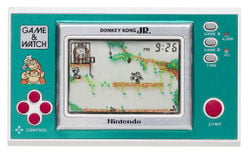
| |||
| Developer | Nintendo Research & Development 1 | ||
| Publisher | Nintendo | ||
| Platform(s) | Game & Watch, Mini Classics, Nintendo DSi, Nintendo 3DS | ||
| Release date | Game & Watch: Mini Classics: Nintendo DSi (DSiWare): Nintendo 3DS (eShop): | ||
| Genre | Puzzle | ||
| Rating(s) |
| ||
| Mode(s) | Single player | ||
| Format | Game & Watch:
Built-in Nintendo DSi:
Nintendo 3DS: | ||
| Input | Game & Watch:
Nintendo DS: Nintendo 3DS:
| ||
| Serial code(s) | DJ-101 | ||
Donkey Kong Jr. is a Game & Watch adaptation of the arcade game of the same name. As in the arcade game, Donkey Kong is captured by Mario, and Donkey Kong Jr. must save him. There are two major revisions—the original version in the New Wide Screen series (released on October 26, 1982), and the colorized game in the Table Top and Panorama Screen series (released on April 23, 1983, and October 7, 1983, respectively) with an entirely different level and obstacle layout. Donkey Kong Jr. was the first game in the New Wide Screen series. Only the New Wide Screen version was ported to the Mini Classics, Game & Watch Gallery 3, Game & Watch Gallery 4, and DSiWare. It is also mentioned in the Museum in Game & Watch Gallery 2. The game also has an indirect sequel in the form of Donkey Kong II.
The alarm indicator for the New Wide Screen version is Mario, who is located under Donkey Kong and strikes a bell with a drumstick when the alarm goes off. In the Table Top and Panorama Screen version, Mario is the alarm indicator once again, but this time he is located under the miss counter and above Donkey Kong, and he whistles musical notes when the alarm goes off.
Gameplay
New Wide Screen / Classic version
Donkey Kong Jr. starts at the bottom of the screen, where he is immediately bombarded by birds and Snapjaws. After Donkey Kong Jr. climbs a pair of vines to the second floor, he can find a piece of fruit, which can be dropped on enemies below for bonus points: three for a Snapjaw on the second floor, six for a bird, and nine for a Snapjaw on the first floor. After avoiding more Snapjaws, Donkey Kong Jr. must jump to the swinging key above, which he can use to unlock part of Donkey Kong's cage. The faster Donkey Kong Jr. does this, the more points he earns (from 5 to 20). He then drops down, repeating the process. Once four keys are delivered, Donkey Kong is free, awarding 20 points to the player. Along the way, Donkey Kong Jr. can also grab hold of vines above, which help in avoiding the ground-bound Snapjaws. Every time Donkey Kong Jr. jumps over a Snapjaw without holding on to a vine or jumps down from a vine right after a Snapjaw passes, he receives a point. As the player progresses in the game, more enemies appear, and they eventually move faster. If an enemy hits Donkey Kong Jr., if he jumps and misses the key, or if he falls off the left side on the second floor, he loses a life. If Donkey Kong Jr. reaches 300 points without any misses, the points are worth double until he does get a miss. If he has any misses at said score, every miss is cleared instead. When he loses three lives, the game is over.
Table Top / Panorama Screen version
Donkey Kong Jr. has to navigate his way between the key and Donkey Kong through a different layout from the New Wide Screen version. From the key, Donkey Kong Jr. has to make his way through some trees by using vines to get to different branches. Birds and Snapjaws appear in this section. Afterwards, Donkey Kong Jr. needs to grab the bottoms of umbrellas (which are on the left and descending) and balloons (which are on the right and ascending), being careful not to fall into a pool of water. He must insert the key into the lock on Donkey Kong's chains, but Donkey Kong is waving his chain, and one wrong move can cause the key to fall into the water. Donkey Kong Jr. must go back to the key, and the process resets. Once all the chains are unlocked, Donkey Kong is freed from Mario, and the game resets.
Modern version
The version in the Game & Watch Gallery series has similar controls, although the enemies are different, including Goombas, Nipper Plants, Bullet Bills, and Spinies. Unlike in the Classic version, Mario throws the key at the beginning of each stage. Also, if Donkey Kong Jr. takes too long to free Donkey Kong after getting the last key, Donkey Kong Jr. receives fewer than 20 points. Donkey Kong Jr. can stomp Goombas and Bullet Bills to destroy them, earning a point for each defeat in the process. In this version, Donkey Kong Jr. earns five points for dropping a fruit on an enemy. The stage also alters its appearance each time the player successfully releases Donkey Kong. The game starts with a jungle ground-level setting. When Donkey Kong Jr. gets the key here, a Rotary Lift appears to the left of the cage. The next stage features the treetops during sunset. An albatross appears to the right of the cage when Donkey Kong Jr. gets the key here. The final stage is a clouded area at night. Here, two Cloud Blocks appear to the left of the cage when Donkey Kong Jr. gets the key. If he jumps onto a spinning Rotary Lift, a disappearing albatross, or fluffing Cloud Blocks, he falls to the second floor (or a small safety platform on the second stage). This version also has bottomless pits on the second and third stages, and if Donkey Kong Jr. falls into one, he loses a life. When Donkey Kong Jr. amasses 200, 500, and 700 points, a heart appears for him to remove a miss. Music is also featured in this version, with the tempo changing depending on the speed of the game. When the player goes to a different stage, the music changes.
In Game & Watch Gallery 4, selecting the game yet waiting to actually start it results in a humorous sequence being played. In particular, Donkey Kong Jr., while strolling, notices a fruit in a tree and attempts to jump up to grab it, but to no avail. Mario then arrives and grabs the fruit. Just at that moment, however, Donkey Kong arrives, causing Mario to flee, only to presumably crash into something. Donkey Kong then leaves offscreen, only to come back and reveal that he somehow got Mario locked in a cage, which Donkey Kong drags with him before posing.
Controls
Game & Watch Gallery 3
: Move
and
: Jump
Game & Watch Gallery 4
 : Move
: Move and
and  : Jump
: Jump
Super Smash Bros. series
In the Super Smash Bros. series, Mr. Game & Watch has a move where he swings a key in a near-identical fashion to Donkey Kong Jr.
DSi Shop description
American
Nintendo first began releasing the Game & Watch series in 1980. This collection of games was available on portable LCD devices, and each title featured a game and a clock. Each Game & Watch title features two modes of play: GAME A (normal difficulty) and GAME B (more advanced play). While some controls have been changed in the DSiWare version to better suit the Nintendo DSi system, the appearance of the game itself has not been altered.
Donkey Kong is trapped! It's up to Donkey Kong Jr. to snag the key and set his father free from Mario's cage. Help Donkey Kong Jr. avoid crows and alligators as he swings his way to victory! Earn points by unlocking the cage, hitting crows and alligators with pieces of food, or jumping over alligators. Receive mistake icons by running into crows and alligators or missing a jump for the key; receive three mistake icons, and it's game over!
European
Experience a piece of Nintendo history with the Game & Watch series for Nintendo DSiWare. Each title is a perfect recreation of a classic LCD game from the early 1980s, including normal Game A and alternate Game B modes. And no Game & Watch title would be complete without the 'Watch' function - each title includes a fully functional clock. In Donkey Kong Jr., the great ape has been captured by Mario. As DK’s son, you must rescue your father by collecting keys to unlock his cage. Jump and climb, dodge crocodiles and birds, and make a well-timed leap to reach the swinging key. In Game B, enemies move faster, and the time Donkey Kong Jr. can hang onto vines is shorter.
Gallery
Modern version
Game & Watch Gallery 3
Warp Pipe (green and vertical)
Game & Watch Gallery 4
Names in other languages
| Language | Name | Meaning | Notes |
|---|---|---|---|
| Chinese | 森乐刚[1] Sēnlègāng |
Donkey Kong Jr. |
Trivia
- At the start of the Table Top and Panorama version of Donkey Kong Jr., the first nine melodic notes of the Toccata and Fugue in D minor, BWV 565 by Johann Sebastian Bach play, except they are raised by a whole step.
- This game also uses part of "Le Galop infernal d'Orphée aux Enfers," a song created in 1858 by the French composer Jacques Offenbach, when the player has to juggle between balloons and umbrellas to be able to reach Donkey Kong and free him.
- When the player plays the Modern version of Donkey Kong Jr. in Star Mode, all Goombas are replaced with Spinies, regardless of the score. This is similar to how the new quest mode of Super Mario Bros. replaced Goombas with Buzzy Beetles.
References
- ^ From the iQue DSiWare release
External links
- North American site
- Nintendo UK site
- Donkey Kong Jr. info page on In the Attic, a website dedicated to classic videogames (Internet Archive: Wayback Machine)
- In the Attic info page for a 1983 "tabletop" version of Donkey Kong Jr. (Internet Archive: Wayback Machine)
- In the Attic info page for another 1983 version of Donkey Kong Jr., with different controls (Internet Archive: Wayback Machine)
| Game & Watch games | ||
|---|---|---|
| Super Mario franchise | Donkey Kong (1982, MS) • Mario Bros. (1983, MS) • Mario's Cement Factory (1983, TT/NWS) • Mario's Bombs Away (1983, PS) • Donkey Kong Hockey (1984, MVS) • Super Mario Bros. (1986, CrS | 1987, Sp | 1988, NWS) • Mario the Juggler (1991, NWS) • Game & Watch: Super Mario Bros. (2020, CoS) | |
| Donkey Kong franchise | Donkey Kong (1982, MS) • Donkey Kong Jr. (1982, NWS | 1983, TT & PS) • Donkey Kong II (1983, MS) • Donkey Kong 3 (1984, MVS) • Donkey Kong Circus (1984, PS) • Donkey Kong Hockey (1984, MVS) | |
| Miscellaneous | Green House (1982, MS) | |
| MS: Multi Screen • TT: Table Top • PS: Panorama Screen • NWS: New Wide Screen • MVS: Micro VS. System • CrS: Crystal Screen • Sp: Special • CoS: Color Screen | ||
| Game & Watch Gallery series | ||
|---|---|---|
| Games | Game & Watch Gallery (1997, GB) • Game & Watch Gallery 2 (1997, GB) • Game & Watch Gallery 3 (1999, GBC) • Game & Watch Gallery 4 (2002, GBA) | |
| Super Mario minigames | Donkey Kong2,4 • Donkey Kong Jr.3,4 • Donkey Kong II3 • Donkey Kong 34 • Mario Bros.3,4 • Mario's Bombs Away4 • Mario's Cement Factory4 | |
| Minigames remade with Super Mario content |
Ball2 • Boxing4 • Chef2,4 • Egg3 • Fire1,4 • Fire Attack4 • Greenhouse3 • Helmet2 • Manhole1 • Octopus1,4 • Oil Panic1 • Parachute2 • Rain Shower4 • Turtle Bridge3 • Vermin2 | |
| Gallery Corner | Message Board • Museum • Music Room | |
| Further info | Gallery (2 · 4) • Pre-release and unused content (4) • Staff (2 · 3 · 4) | |
| Related game | Game & Watch Collection | |
